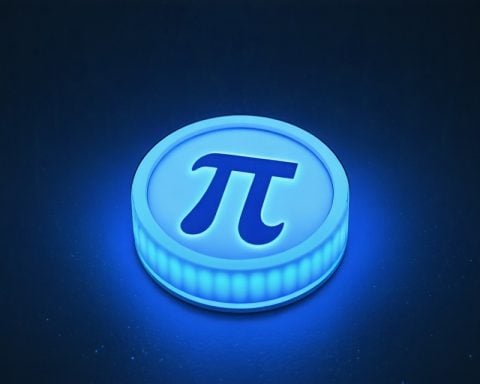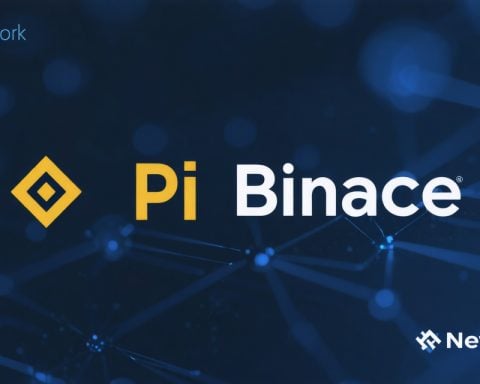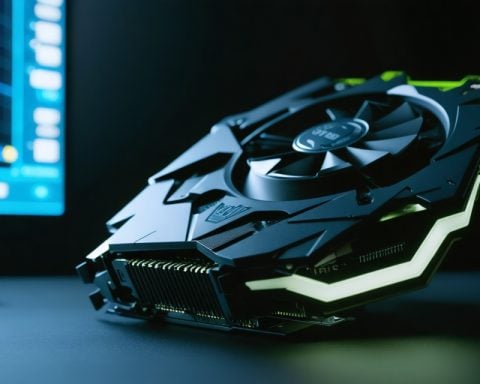- Pi Network, launched in 2019, aims to transform economic opportunities with over 35 million active users.
- The network allows smartphone-based cryptocurrency mining, offering accessibility without high-energy costs.
- Utilizes the Stellar Consensus Protocol to democratize digital currency access by minimizing energy use.
- Potential to empower individuals in underserved areas, promoting financial inclusion and innovation.
- Envisions a decentralized digital marketplace for easy trading, reshaping economic interactions.
- Skepticism persists regarding scalability, currency utility, and security risks.
- The future of Pi Network is uncertain, with its next phases crucial in determining its impact on digital finance.
In the fast-evolving world of digital currencies, the Pi Network is emerging as a bold contender with the promise of transforming economic opportunities, particularly in developing regions. Launched in 2019 by Stanford graduates, Pi Network is making headlines with over 35 million active users, all eagerly awaiting its official mainnet launch.
Imagine mining cryptocurrency directly from your smartphone, without the high-energy costs or the need for extensive technical expertise. That’s Pi Network’s claim to fame. Leveraging the Stellar Consensus Protocol (SCP), Pi minimizes energy use by relying on trusted user networks to approve transactions instead of energy-draining processes like Bitcoin’s Proof-of-Work. This innovative approach democratizes access to digital currencies, potentially empowering individuals in remote or underserved areas by bridging the digital divide and opening doors to financial inclusion and innovation.
Picture a bustling digital marketplace where anyone can trade with just a phone in hand, fostering decentralized economies and reshaping how communities interact economically. This is the potential future that Pi Network envisions. Yet, as it edges closer to its next phase, skepticism lingers. Questions about its scalability, the real utility and value of its currency, and potential security risks fuel ongoing debates.
In an era where digital accessibility is paramount, Pi Network could either become a trailblazer in the cryptocurrency realm or a well-discussed experiment. The coming months are crucial in determining if Pi Network will live up to its revolutionary promise or if it will simply spark further debates about the future of inclusive digital finance. Curious minds around the globe are watching. Will you?
Is Pi Network the Next Revolutionary Cryptocurrency or Just Another Experiment?
How Does Pi Network Differ from Traditional Cryptocurrencies Like Bitcoin?
The Pi Network distinguishes itself from other cryptocurrencies, such as Bitcoin, through its innovative use of the Stellar Consensus Protocol (SCP). Unlike Bitcoin’s energy-intensive Proof-of-Work system that relies heavily on computational power, Pi Network employs SCP which allows users to mine directly from their smartphones. This low-energy model could significantly democratize access to cryptocurrency, allowing for broader adoption, especially in energy-constrained regions. With over 35 million active users, Pi is positioning itself as a more inclusive alternative for digital currency mining.
What Are the Potential Pros and Cons of Using Pi Network?
Pros:
– Energy Efficiency: Pi Network’s low-energy mining appeals to both environmentally conscious users and those with limited access to powerful computing resources.
– Accessibility: Mining via smartphone could open up digital currency access to a broader, more diverse audience, particularly in developing regions.
– Community-Based Security: Its reliance on a network of trusted users could enhance transaction security without the resource drain typical of traditional cryptocurrencies.
Cons:
– Scalability Concerns: As the network grows, maintaining transaction speeds and reliability could prove challenging.
– Unclear Utility: Questions remain about the real-world utility and value of Pi once it fully launches.
– Potential Security Risks: Although innovative, the trusted network method could encounter unforeseen security vulnerabilities.
What Does the Future Hold for Pi Network and Its Users?
The coming months are pivotal for Pi Network as it approaches its mainnet launch.
– Market Predictions: Analysts are divided on Pi’s potential for market disruption. Its success could usher in a new era of mobile-first cryptocurrency platforms, while failure might reinforce skepticism about nascent digital currencies.
– Sustainability & Innovation: The sustainable model is likely to influence future cryptocurrency innovations, particularly those aiming to balance accessibility with environmental commitments.
– Community Engagement: User engagement will be crucial; the community can drive further developments and enhancements to the network.
Suggested Related Links
To gain further insights and updates, visit Pi Network and explore more about its mission, technology, and potential impact.
Whether you’re a cryptocurrency enthusiast, a tech visionary, or a casual observer, the evolution of Pi Network is an unfolding story worth following. Will it redefine decentralized economies or serve as a fascinating case study in digital finance? Only time will tell.


















